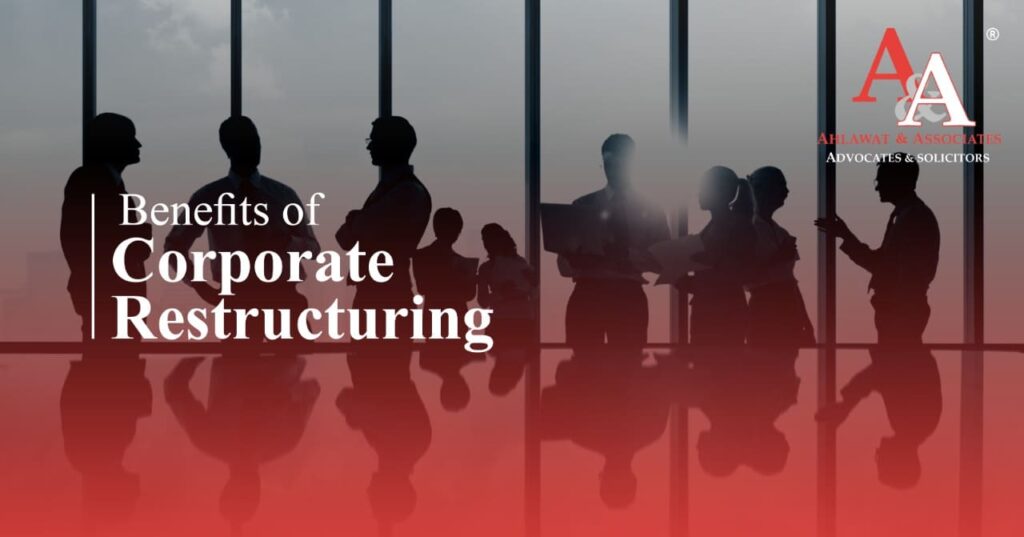
 Upamanyu Banerjee , Amrita Mehdiratta
Upamanyu Banerjee , Amrita Mehdiratta
 November 10, 2022
November 10, 2022
The concept of corporate restructuring refers to the internal reorganization of the concerned company’s operating structure either involving an alteration of the company’s business structure or the core business operating outlooks or both. The major instances of corporate restructurings as seen across the globe such as the reorganization of The Walt Disney Company’s global business in 2020, the 2018 management reorganization of Tesla Motors or the reorganizations of the business structure of Google and Facebook leading to the creation of their holding companies namely Alphabet and Meta respectively.
Closer to home one of the largest successful exercises of corporate restructuring is the exercise being undertaken by the Tata Group since 2018 wherein the entire conglomerate was divided into around ten verticals to streamline the business for the future. All these instances beg the question as to the need behind any corporate restructuring exercise and the elements behind any successful corporate restructuring exercise undertaken. Some of the most common inspirations behind such an activity by a Company are:
At the very core of the concept corporate restructuring consists of a reorganisation of the internal working structure of the Company or the constituent structure of a corporate entity either as a single company or across multiple groups in line with the long-term goals of the entity which seeks to conduct the restructuring exercise.
Any such exercise also aims to ensure a more efficient performance of the corporate entity. Generally, a corporate restructuring exercise may consist of debt reorganisation, rearranging of constituent business units by way of mergers, acquisitions, changes to the human resources structure of the entity apart from others.
A&A is home to some of the best Corporate lawyers in India. Feel free to contact us if you need any kind of legal assistance.
Corporate restructuring can take place in multiple variations depending on the underlying reasons behind the exercise. Broadly, the types of corporate restructuring can be divided between a financial restructuring or an organisational restructuring of any entity or a combination of both depending on the restructuring strategy. The main forms of corporate restructuring can be enumerated in the following forms:
A closer look at global trend demonstrates that the following are the most common formats of the process of corporate restructuring depending on the restructuring strategy:
A merger refers to two companies merging usually through an exchange of shares in order to create a new entity termed as an amalgamation. Acquisition refers to the purchase of a company’s assets, equity shares in exchange of cash, equity shares or an asset swap. A merger can often be in the form of a reverse merger as was observed in the merger of ICICI Ltd with ICICI Bank in 2001-2002 wherein a private company swaps its shares with the shares of the public company which is used as a method of issuing securities to the public without having to follow the extensive regulatory compliances as are required for issuing an Initial Public Offering (IPO). An acquisition can be in the form of a friendly takeover wherein the acquirer company takes over the management of the target company with the permission of the board of the target company; or in the form of a hostile takeover wherein the acquirer company takes over control of the management of the target company by circumventing the board of the target company. A variation of this exercise is in the form of a disinvestment wherein one or more business units e.g either an asset or a subsidiary is sold off either entirely or partially or liquidated by the target company such as in the case of the privatisation of Air India by the Government of India in the form of a complete disinvestment.
Looking for a Mergers and Acquisitions Law Firm? Contact us and we'll be happy to help.
A demerger exercise is essentially the separation of a portion of a company business into a separate business entity. The exercise may be carried out by way of a spin-off as was observed when Agilent Technologies was spun off from Hewlett-Packard in 1999 wherein a parent company transfers shares of the section of the business to be separated to the existing shareholders of the parent company; a split-off as was observed when the US erstwhile media giant Viacom Inc spilt off the Blockbuster DVD store chain in 2004 before putting it up for sale wherein shares of the proposed company is transferred to a the existing shareholders of the parent company in exchange for the shares of the parent company at a pre-specified ratio; and thirdly in the form of a carve-out as was observed in 2018 when L&T sold off its automation business to Schneider Electric wherein the shares of the new company are separated from the parent company and may be offered to the general public in the form of an IPO therefore creating a new class of investors thereby increasing company equity while holding management control. The entire intent of this exercise is to increase the Company’s equity in the market apart from a reorganisation of the parent company’s organisational structure as a way of increasing efficiency in line with pre-determined corporate goals.
A slump sale is a type of transaction wherein a company sells one or more business undertakings in exchange of a lump sum payment without itemised payments based on assets. A slump sale is effected by a Business Transfer Agreement and provides for certain benefits when the tax liability for the transaction is computed as was observed when Johnson and Johnson sold off one of its industrial units in India in October 2022.
Broadly speaking, a joint venture is formed when two companies combine to form a new entity as a measure of increasing synergy and the partner companies will get a share of revenues and profits as per a pre-agreed ratio. A joint venture is majorly of two types namely a project based joint venture which is short-term in nature and is primarily concerned with a single project as observed in the instance of Delhi International Airport Ltd between the GMR Group and its various partners to build and operate the IGI Airport in New Delhi which may be short term or long term in nature; the second form of joint venture which may be formed is a functional joint venture which is formed with a more long term outlook as was observed in the case of Sun Pharmaceuticals and Merck Co Inc in order for the two pharma companies to jointly develop new innovations in the medical field by bringing together their combined experience in the field. A strategic alliance on the other hand refers to the agreement between two or more companies in order to work jointly and collaborate on various projects without focussing on a single area of actions generally without any form of equity sharing such as in the case of the Spotify and Uber wherein uber users are encouraged to sign up for the premium offerings of Uber thereby allowing Uber to gain an advantage over its competitors with its music offerings while Spotify gets access to enormous customer base of Uber.
The ultimate objective of corporate restructuring is to promote synergy in the corporate entity which will allow greater optimisation of resources and financial returns in the form of greater revenues or a lower long term operating cost of the company undertaking the exercise following the completion of the activity. Corporate restructuring aims at maximising the competitive position of the company in line with the goals of the management. The major benefits of a corporate restructuring activity can be enumerated as under:
A successful corporate restructuring activity allows the entity carrying out the activity to achieve a greater market share.
Corporate restructuring results in the achievement of economies of scale and allows for any entity to reduce unit cost.
Corporate restructuring activities allows for companies to stay attuned to the latest innovations in the market.
Corporate restructuring activities allows for a company to diversify their business activities and ensure that their revenue stream is protected in case of changing economic trends.
Corporate restructuring leading to greater synergy allows for streamlined operations and gives any company the scope to grow their operations and achieve a greater market share.
A corporate restructuring exercise can be carried out in a variety of ways depending on the corporate restructuring strategy in line with the objective of the corporate restructuring in order to ensure that the maximum benefits are achieved. There are several forms of corporate restructuring which may be used to ensure that the best possible outcomes have been achieved as has been described above with the lowest common denominators of success in such an activity being the increase in revenue and profits or the lowering of operating costs or both. As has been observed globally if a corporate restructuring exercise has been carried out by a corporate entity after giving due thought to all requisite considerations then that will result in ensuring greater synergy for the entity and a marked improvement in the operational potential of the entity in line with the with the principles enumerated in the article.
The ultimate benefit of a corporate restructuring exercise is to achieve greater synergy of operations by streamlining the business in line with the larger corporate objectives.
The major effective signs of a corporate restructuring exercise are:
There are no statutory or regulatory timeframes for the completion of a corporate restructuring exercises it entirely depends on the commercial considerations for the completion of the exercise.
The key signs of a successful corporate restructuring exercise can be identified as the following:
The major challenges any organisation may face when conducting a corporate restructuring exercise are:

Are you an employer wondering what type of benefits you are obligated to provide to employees?
View More
A contract is an agreement between two parties that is enforceable by law. It is crucial
View More
In a world of uncertainty, employment contracts can be immensely valuable to employers
View More















 Cookies Consent
Cookies ConsentWe use cookies to help you navigate efficiently and perform certain functions. You will find detailed information about all cookies under each consent category below. Read more...
 Cookies Consent
Cookies ConsentWe use cookies to help you navigate efficiently and perform certain functions. You will find detailed information about all cookies under each consent category below. Read more...


Comments
Post A Comment
Your email address will not be published *